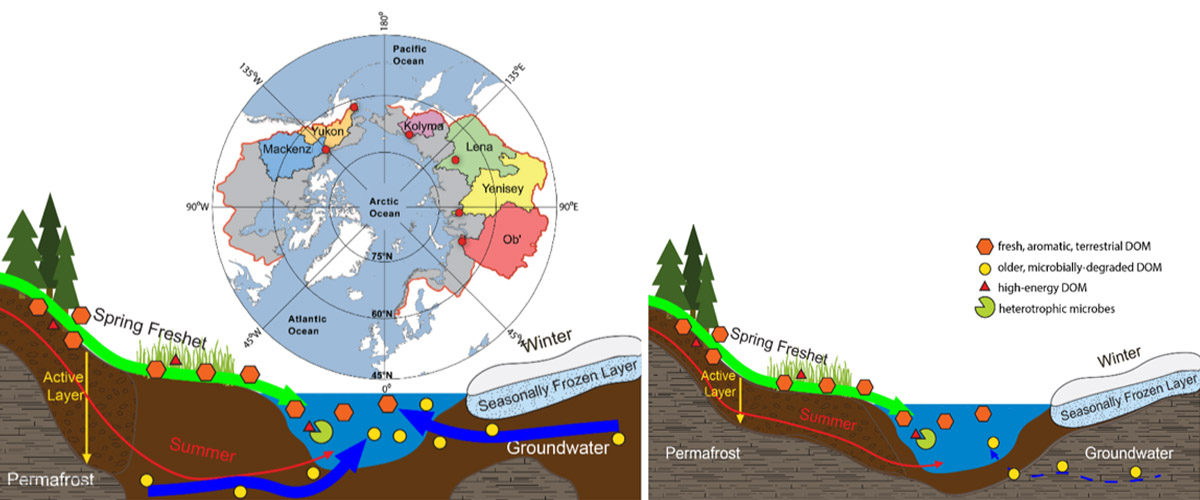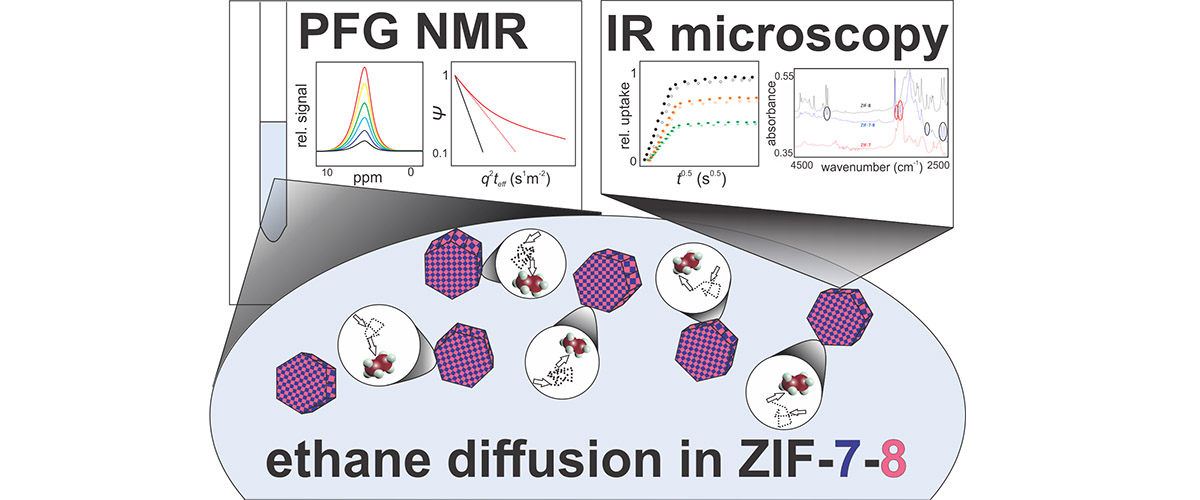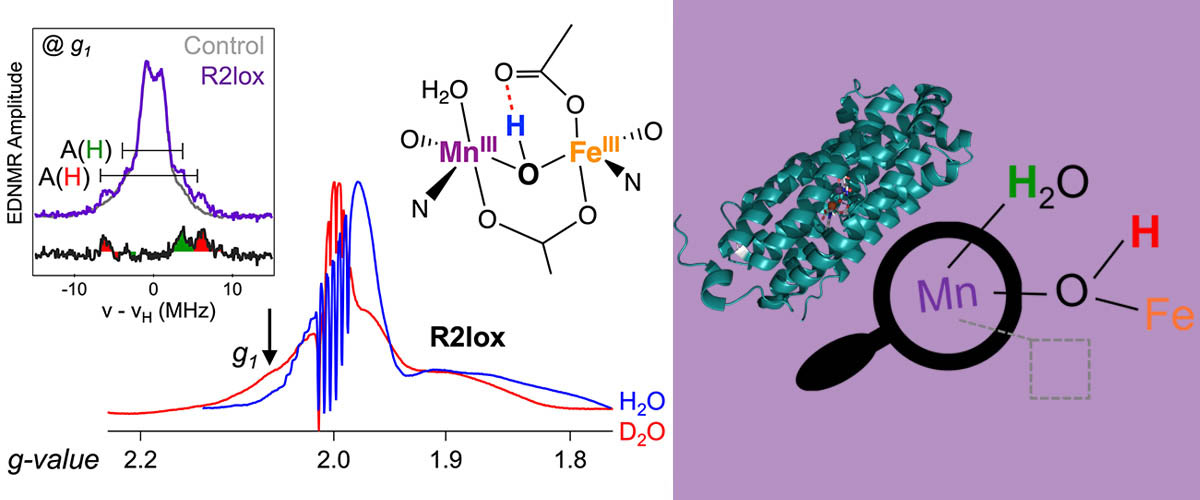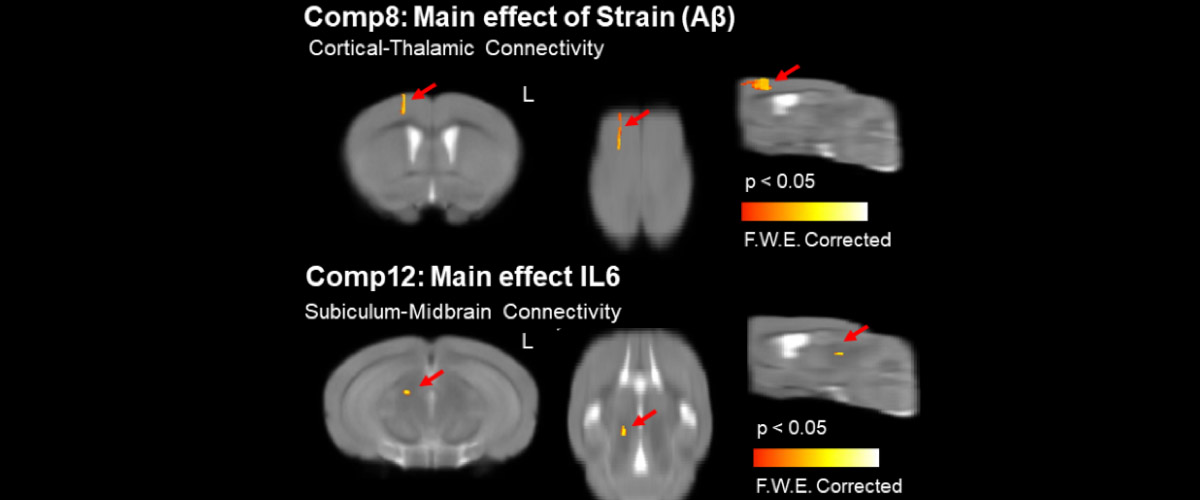What did scientists discover?
The source and composition of dissolved organic matter (DOM) in Arctic rivers is strongly tied to seasonality. Increases in Arctic permafrost thaw result in older and more stable DOM being exported to the Arctic Ocean. A unique set of high energy compounds appear in spring and can subsidize marine organisms at this important time for productivity.
Using six years of samples, Fourier-transform ion cyclotron resonance mass spectrometry and radiocarbon data, findings suggest pan-Arctic seasonal DOM compositional patterns and high-energy carbon subsidies to the ocean. Future warming may shift DOM sources as permafrost thaws and groundwater inputs (and their old stable DOM load) increases.
Why is this important?
Climate change is thawing permafrost soils in the Arctic, increasing the amount of time DOM spends in groundwater. This longer time increases the degree to which microbes modify the DOM, This microbial processing makes the DOM more stable. Increasing of permafrost thaw and groundwater inputs to rivers may increase the amount of stable, old DOM that rivers release to the Arctic Ocean, thereby increasing the ocean’s carbon sink.
Who did the research?
M.I. Behnke1, J. McClelland2, S. Tank3, A. Kellerman1, R.M. Holmes4, R.G.M. Spencer1
1Florida State University; 2University of Texas Marine Science Institute; 3University of Alberta; 4Woodwell Climate Research Center
Why did they need the MagLab?
The MagLab’s 21T Fourier-transform ion cyclotron resonance mass spectrometer measures the mass of molecules in complex mixtures with enough precision to determine the only possible molecular formulae of each molecule in the mixture. The 21 T instrument achieves the highest resolving power in the world, allowing the most accurate assessment of the tens of thousands of individual molecules found in Arctic rivers.
Details for scientists
- View or download the expert-level Science Highlight, Dissolved Organic Matter in Arctic Rivers: Synchronous Molecular Stability, Shifting Sources and Subsidies
- Read the full-length publication Pan‐Arctic Riverine Dissolved Organic Matter: Synchronous Molecular Stability, Shifting Sources and Subsidies, in Global Biogeochemical Cycles
Funding
This research was funded by the following grants: G.S. Boebinger (NSF DMR-1644779); Arctic Great Rivers Observatory (110774; 1602615; 1603149; 1602680; 1913888; 1914081; 1914215; NSF GRFP)
For more information, contact Christopher Hendrickson.






